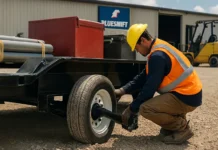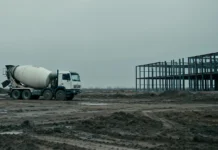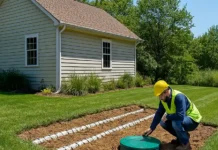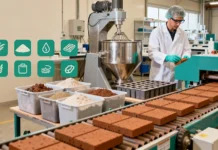If you have a building project in mind on your property, there’s a good chance it will involve some sort of building block for the structure. The details of the types of bricks you choose and the materials used aren’t that important when you’re hiring a company to do the hard work for you. But what if you’re planning on a full DIY approach? That’s when it pays to learn more about the different types of blocks available and what they’re made from. The more research you do to determine the best options for your project, the better the results. Here is a quick introduction to get you started.
Different Blocks For Different Projects
Before you fall down any rabbit holes learning about different composites and brick shapes, what are you planning to build? The answer will determine the best type of block for your needs. Extensive projects involving new living spaces, outbuildings, or even whole new homes require different types of tough bricks to get the protection and security you are after. Smaller-scale DIY projects with exposed bricks will benefit from something completely different, perhaps with a greater aesthetic quality. Then there are the outdoor projects, like small garden walls and firepits, that have to be effective and weatherproof above anything else. Thankfully, there is a wide variety of blocks on offer. Here are some of the differences between them to help you understand what you might need
Solid Blocks
First up, there are the different forms of solid concrete blocks. These can vary depending on how they’re formed and the materials used. Solid concrete blocks are as the name suggests. They are solid, strong, and look similar to traditional bricks. They are popular with builders because they offer such effective barriers from external elements. You can use them for walls and exterior features like garden walls and fire pits without worrying about water damage or temperature fluctuations. They are heavier to use but can be pretty inexpensive.
If you want something more lightweight, there are other types of solid blocks available. These are classed as solid because they are the same from one end to the other. The difference is the use of cellular structures or areated concrete rather than the more concentrated cement mixture. The amount of air trapped in these allows for that lighter weight and ease of use. It also means you can screw into them more easily, adding to their practical nature. The downside is that they are not as strong, so they can’t take a lot of weight. Even so, they are very good for insulation and soundproofing.
Hollow Blocks
Hollow blocks aren’t the same as those sold aerated blocks with all the air trapped inside. Instead, they are designed with deliberate spaces in between the exterior sections of the brick. They come in many shapes and sizes to suit different purposes, and you should check out the full range to find everything you might need. For example, there are lintel blocks with deep grooves that create a U shape. These are typically used as supports above windows and doors. The groove allows for stronger concrete or bars to help take the weight of the wall above. Column blocks are also useful in buildings, where the center is used to create an equally strong reinforced structure. There are also more narrow partition blocks, corner blocks, and more.
Concrete Blocks Vs. Breeze Blocks Vs. Celcon Blocks
Another hurdle for those buying their own blocks for the first time is the terminology. You’ll see the names breeze block and celcon block online alongside concrete block, so what’s the difference? Well, it all comes down to the composition. All blocks are formed by mixing a series of materials together in the right mold and setting them. It’s how we have such standardized shapes and sizes available online.
Concrete blocks are made from a combination of cement, sand, and stone aggregates. You can see the latter in the specked effect of mixes. Breeze blocks have coal cinders and ash mixed in with the concrete instead. This is why they are typically lighter than concrete blocks and more uniform in color. The choice will depend on your project. If you need something strong and weatherproof, concrete tends to perform better. If you have an exposed wall that isn’t weight-bearing, you might prefer breeze blocks. Breeze blocks are easier to use, especially for novices, but they still have to be fit for purpose. Then there are the celcon blocks, which is another name for the aerated type of concrete block mentioned before. Some companies will offer these as lightweight alternatives at a fair price.
Buying Concrete Blocks Online
Once you have a better idea of the type of blocks you want, you can place your order. You could do this out at local builder’s merchants, where you can physically see the different types and talk to the sales team. However, there are also online stores that offer the same quality products and a variety of blocks. As long as you know the type of material you want and the right thickness, you can find the right match. The sales team will take your order and arrange a delivery so you don’t have to leave your property to get what you need. You may also find that you have built enough of a relationship with a provider that you can benefit from some form of discount or loyalty scheme in the future.
Hopefully, this guide has offered a starting point into the world of concrete and breeze blocks to help you proceed in the right direction. Figure out whether it’s best to have solid concrete blocks for strength, practical hollow blocks for integrity, or lighter breezeblocks for convenience. Maybe you’ll need a selection of all three. Find a trusted supplier to get you the materials you need at the right price, who you can call on as many times as you need. Also, don’t worry if you get the wrong one the first time. Learn from your mistakes and keep going.





























